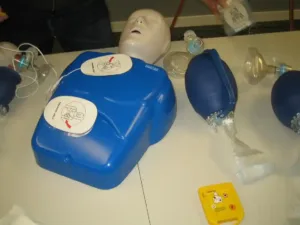The majority of trainees signing up for training programs in cardiopulmonary resuscitation (CPR) need certification because of work or school requirements. Most employers require employees to get basic CPR and first aid certification – more so if you work in health care. Health care professionals who work directly with patients have more requirements such as ACLS and PALS certification. Health care students usually get certified before graduation to make completing work requirements much easier. Honolulu CPR can offer that for the most flexible rates in Hawaii; you won’t have to look at another provider once you see what they can offer you.
Programs available at Honolulu CPR
Basic Life Support

The Basic Life Support program at Honolulu CPR is the main program that CPR and first aid training are part of. BLS programs are tailored for there kinds of trainees: the general public, first responders, and health care providers (HCP). There are four total programs available under the BLS program:
- Heartsaver CPR/AED
- Heartsaver CPR/AED (C)
- BLS for Healthcare Provider (C)
- BLS for Healthcare Provider (C) Renewal
Heartsaver CPR and AED training
The first two programs teach the same topics but are focused differently in terms of certification. The course curriculum covers basic rescue skills for emergencies such as cardiac arrest, stroke, and choking (among others). The first program is offered to the general public and students can either choose to take a skills test to receive a completion card/certificate. The second program is tailored for those seeking certification/credentials. A skills test and a written exam are administered after the second program is completed.
Both programs take 4 hours to complete and do not have an available renewal program.
BLS for healthcare providers
The last two programs are tailored exclusively for health care providers seeking certification for CPR, both in an out of a health care setting. This program teaches HCPs how to recognize emergency situations and to react accordingly, whether there is complete equipment in a hospital setting or not. The 2010 BLS guidelines from the American Heart Association is used in this program.
BLS for healthcare providers takes 4.5 hours with a renewal program that runs for 4 hours. Unlike the first two programs for the general public, students can only qualify for this program upon passing a written exam and a skills test.
ACLS – Advanced Cardiac Life Support

ACLS training is targeted mainly towards health care providers, and is an advanced program that focuses on the team approach to providing cardiopulmonary resuscitation (CPR). This involves training on team dynamics, the components of and using a crash cart, and specific airway management. The program teaches students through different simulations and scenarios, again with a team-based approach to CPR.
This program is 16 hours, with a renewal class that runs from 5 to 6.5 hours. Like CPR training for health care providers, ACLS has a prerequisite as well. Aside from a skills test and a written exam, students need to have a valid Heartsaver CPR and AED (C) completion card to quality for this program.
PALS – Pediatric Advanced Life Support
The course curriculum for PALS is the same as ACLS, but focusing instead on pediatric victims. Pediatric victims include infants, toddlers, school age children, and younger teenagers. The approach to providing CPR in this course is through team dynamics, pharmacology, and airway management. This program is shorter than the ACLS course, running only for 14 hours. There is no available renewal class for PALS but update courses are available.
Students are also required to have a Heartsaver CPR and AED (C) completion card to qualify for the PALS program (as well as passing the written exam and skills test).
